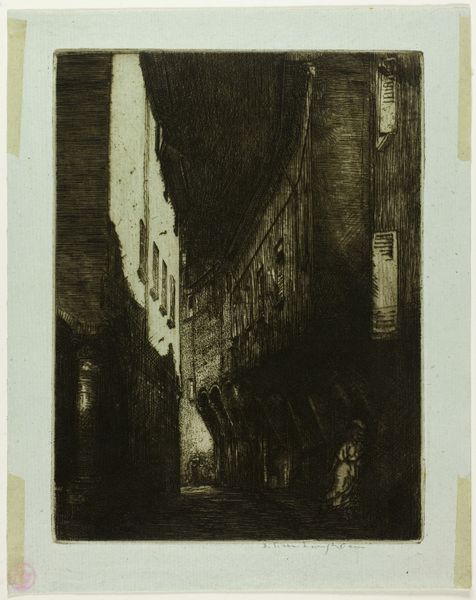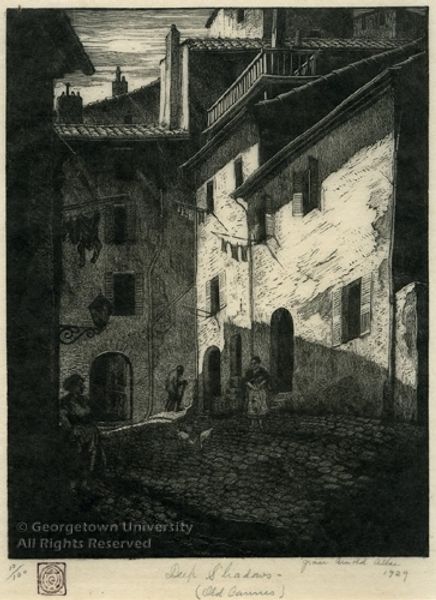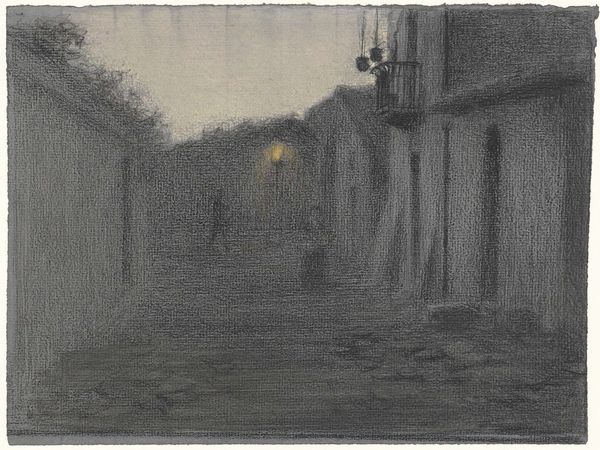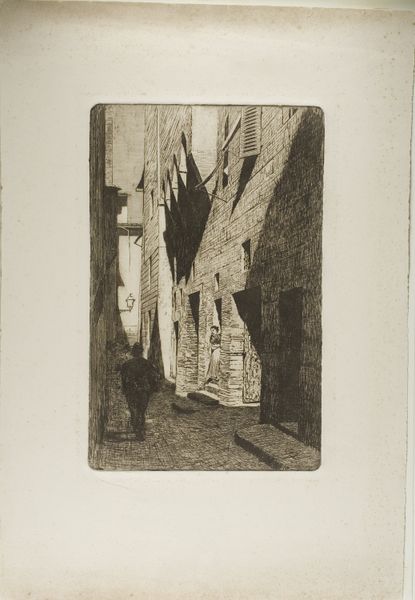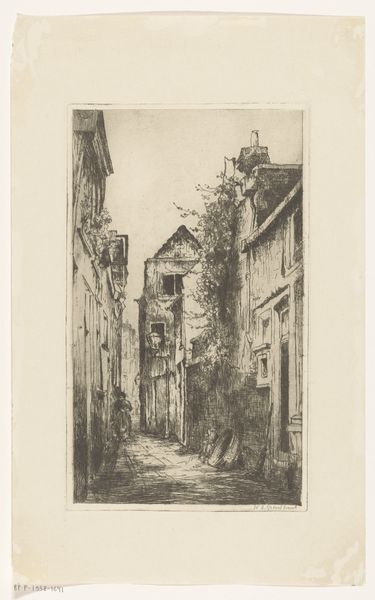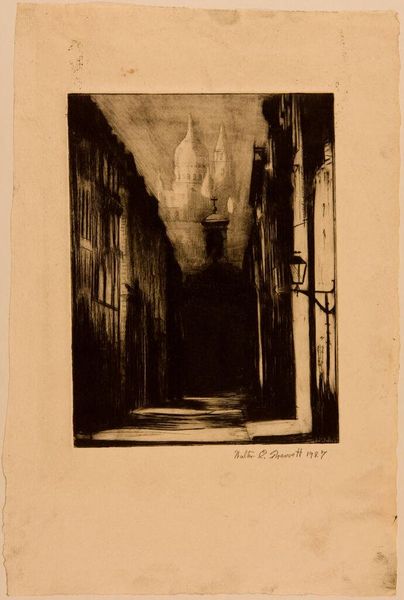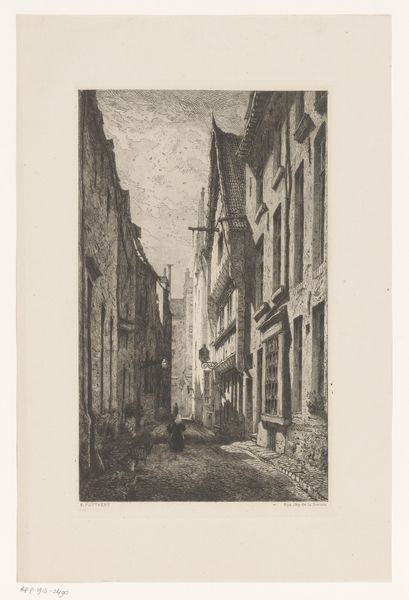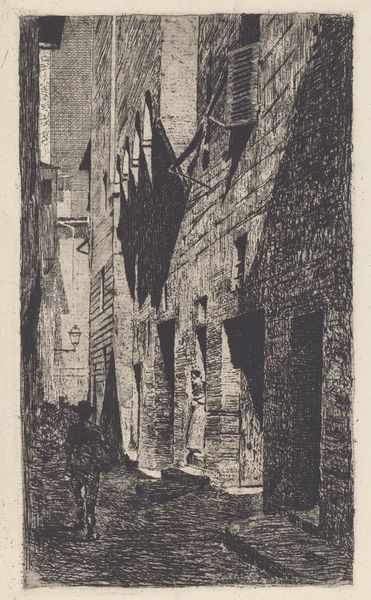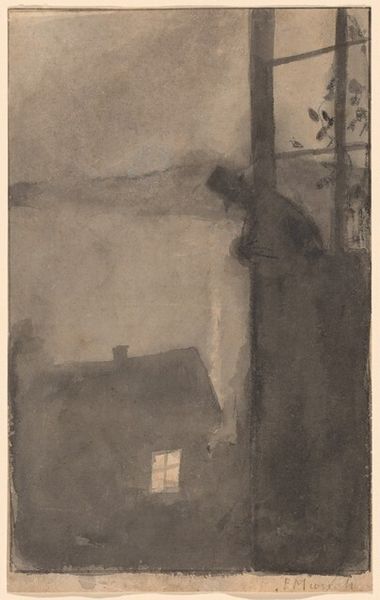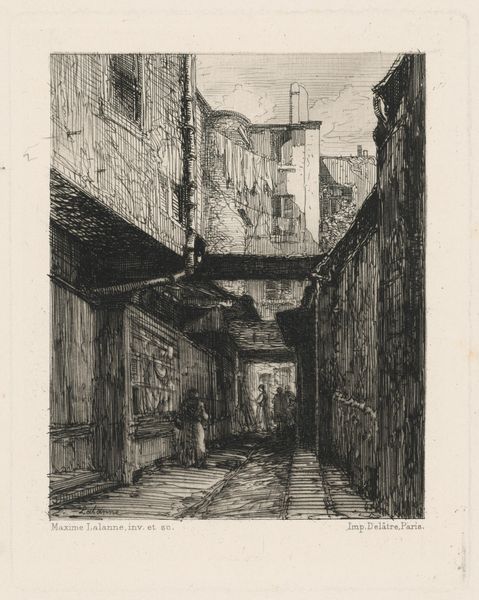
Dimensions: plate: 39.8 × 25 cm (15 11/16 × 9 13/16 in.) sheet: 42.6 × 26.4 cm (16 3/4 × 10 3/8 in.)
Copyright: National Gallery of Art: CC0 1.0
Eugène Delâtre's print, Rue de Vaux, Le Mans, uses etching, a process involving acid to cut into a metal plate, to capture a nocturnal scene. The deep aquatint gives the print its distinctive tonal range, from the blackest shadows to the subtle gradations of the night sky. Consider how this atmospheric effect is achieved. The etcher carefully controls the depth and density of the etched lines. The longer the plate is exposed to acid, the deeper the lines become, allowing for richer, darker tones when inked. The image has a velvety texture, with labor-intensive processes that allow the tones to blend almost seamlessly. The use of printmaking democratized artmaking, allowing for wider distribution. Delâtre's choice of such labor-intensive processes elevates the status of printmaking, blurring the lines between fine art and craft. It emphasizes the value of skilled handwork in an increasingly industrialized era.
Comments
No comments
Be the first to comment and join the conversation on the ultimate creative platform.
